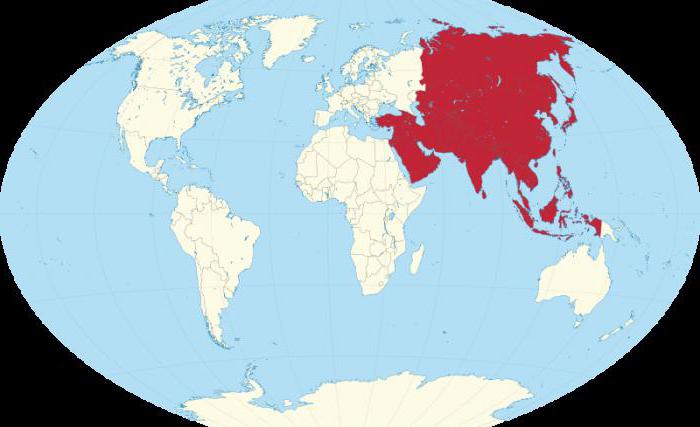Economical geography. Regions of the world
In geography and statistics, for more convenient handling of a huge amount of information, it is customary to single out large regions of the world that have common features in historical development, geographical location or economic condition. It is understood that such a division allows scientists and officials to more precisely apply measures to regulate and stimulate the economy, as well as to pursue a responsible social policy.
Major regions of the world
The first and most obvious division is carried out with a cursory glance at the geographical and political map of the planet. Traditionally, in accordance with their position on the continents, but if such a division turns out to be insufficiently informative, then the regions of the world are additionally divided.
In some cases, such as with Australia or South America, the boundaries of economic regions coincide with the contours of the continents. There are two statistical regions on the North American continent - the North American region itself and the Central America region, the largest country of which is Mexico.
Europe as part of the world is divided into Southern, Western, Northern, Eastern and Central. Each European region has its own geographical and historical features of development. In addition, languages belonging to different linguistic groups and even families are spoken in different regions.

African cornucopia
On the African continent, experts identify five regions that differ from each other both in terms of the conditions in which the political identity of the peoples inhabiting them was formed, and in terms of economic situation.
The North African region includes seven countries with unconditional international recognition, including Egypt, Libya, Sudan, Morocco, Tunisia and Algeria. In addition, on the coast of the Atlantic Ocean there is a disputed territory, whose sovereignty is not recognized by most countries - the Saharan Arab Democratic Republic.
Such a historical region of the world as West Africa includes eighteen states formed after liquidation. Some of these countries, such as Nigeria, have a large territory with a large population and population, while others, on the contrary, represent a narrow strip along the coast of the Atlantic Ocean.
The regions of Central and East Africa share similar geographic characteristics but differ due to different sources of cultural influence. In East Africa, especially in the northern part, the influence of the Italian colonialists is still noticeable to this day, although they did not last long there. At the same time, Portuguese and French can still be heard in the western part of the continent, and in some countries French is considered the state or official language, such as in Benin and Senegal.
The South African region occupies a very special place in relation to its neighbors. For a long time, there were rules that forbade even the joint passage of whites and blacks in the same transport, and the main positions in the country were occupied by the descendants of European colonists. However, in 1994, apartheid was officially banned, which led to a radical change in the internal situation in the country, from which Europeans began to leave en masse.

Crowded Asia
This part of the world is the most densely populated by people and has numerous ancient cultures. To an outside observer, it may seem that it is quite homogeneous. However, this is not at all the case. In the vastness of this continent, several large economic, geographical and cultural regions are distinguished at once, oriented to the cardinal points: Western, Central, Eastern, Northern, Southern and South-Eastern. Some researchers, paying attention to the geographical isolation of India, tend to consider it an independent ethno-geographical region with a rich cultural history.
Of course, in the Asian region, China traditionally has great influence, whose population today reaches one billion two hundred million people, and economic development makes it the second country after the United States in terms of GDP.
Country and continent
Australia occupies a special place in the family of macro-regions - a spacious continent in the southern hemisphere, on the territory of which the country of the same name is located, with a population of about twenty-four million people. This number of inhabitants, combined with a large territory, puts it on the top lines in the ranking of the least densely populated regions in the world.
However, as a macro-region, Australia is considered together with New Zealand and sometimes with the islands of Micronesia.

Two Americas
Both Americas are characterized by significant differences from their neighbors. In this part of the world, local cultures that were completely different from European ones were formed from scratch.
On the lands of these continents, three regions are distinguished, with different economic and political structures - North American, South American and Central America. Each region is extremely crowded.



